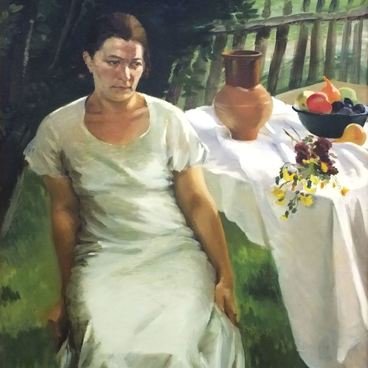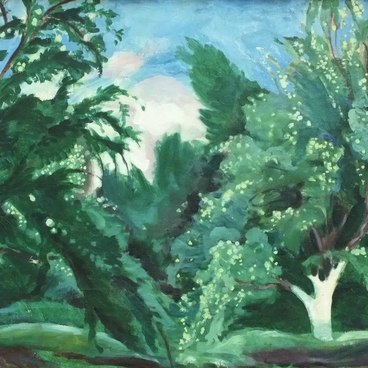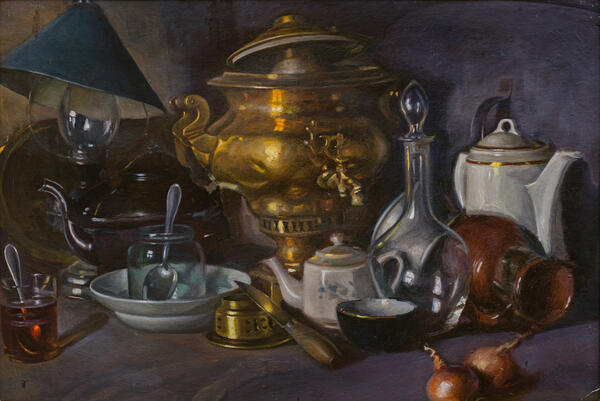One of the major achievements of Alexander Grigoriev was establishment of a museum with a collection of Russian art in his hometown of Kozmodemyansk. This museum is still sometimes called the Little Tretyakov Gallery on the Volga. Its collection includes paintings by Ivan Aivazovsky, Vasily Polenov, Konstantin Korovin, Igor Grabar and other prominent artists.
Lilac
Время создания
1930s
Размер
89,5x90,5 cm
89,5х90,5 cm
89,5х90,5 cm
Техника
oil on canvas
Коллекция
7
Открыть в приложении#1
Alexander Grigoriev
Lilac
#2
#3
The basis of the collection were paintings of the Volga-Kama free mobile exhibition, which was held in Kazan in 1918. Because of the onset of the White Army, further tours to the cities of the Volga region and the Kama region were impossible, and the paintings were in Kozmodemyansk. There, with the active participation of Alexander Grigoriev, they formed the basis of the local museum.
#4
Grigoriev was born in 1891 near Kozmodemyansk in a family of rural teachers. Before entering the art school, he studied at the seminary for several years, but was expelled from it in 1909 for his participation in political demonstrations. In 1910 he entered the Kazan Art School, where he studied under the famous artist Nikolai Feshin. Then he went to study at the Moscow School of Painting, Sculpture and Architecture, where his teachers were Abram Arkhipov and Ilya Mashkov.
In 1919, he returned to his homeland. Here he was actively engaged in organizational activities. Grigoriev worked in a tense social, creative and organizational atmosphere, helping with advice, searching for material resources and organizing exhibitions. With his participation a decorative art workshop and art school appeared in Kozmodemyansk. It was at that time that the museum was established, which became the first museum to open in the Volga region in the difficult post-revolutionary years.
In the 1920s, Grigoriev worked in Moscow and was one of the founders of the Association of the Artists of Revolutionary Russia. He was engaged in a lot of administrative work, took part in exhibitions.
Reproduction of ‘Lilac. On the veranda’ was created in a difficult period of the artist’s life. It was written in Tarusa shortly before the arrest and subsequent exile to the camps for many years. In 1938, he was convicted of anti-Soviet activities and spent the following eight years in Kazakhstan. Grigoriev knew many statesmen of the Soviet Union, including Marshal of the Soviet Union Kliment Voroshilov. He wrote to him with a request to reconsider his case after being subjected to repression, but it did not bring any results.
After liberation in 1946, the label “enemy of the people” was not removed. He couldn’t live in Moscow and he came back to Tarusa. For several years he lived there, in his house, half destroyed by the Germans, earning money by writing signs for diners and cafes. In 1954 he was rehabilitated. He was buried at Novodevichy Cemetery in Moscow.
#5
#6
Bryansk Regional Art Museum
читать дальшескрыть
00:00
00:00
1x
Lilac
Время создания
1930s
Размер
89,5x90,5 cm
89,5х90,5 cm
89,5х90,5 cm
Техника
oil on canvas
Коллекция
7
Открыть в приложении
Поделиться







